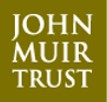 A study by the Centre for Mountain Studies at the University of the Highlands and Islands (UHI) has found that Scotland's five main landowning conservation charities, contribute significantly, to the Scottish economy, even though they own just 2.6 per cent of land.
A study by the Centre for Mountain Studies at the University of the Highlands and Islands (UHI) has found that Scotland's five main landowning conservation charities, contribute significantly, to the Scottish economy, even though they own just 2.6 per cent of land.
The report, which was submitted to the Scottish Land Reform Review Group, focuses on the socio-economic benefits that flow from the ownership and management of land by the John Muir Trust, the National Trust for Scotland, RSPB Scotland, the Scottish Wildlife Trust and Woodland Trust Scotland.
Among the key findings, the report found that as well as protecting some of the most environmentally important sites in Scotland:
· Direct expenditure by conservation charities on land management is over £37m annually, rising to £64m when wider organisational expenditure is included
· Almost four million people a year visit land owned by conservation charities, bringing revenues of between £26m and £105m into some of Scotland’s most remote communities
· Almost 5000 volunteers a year carry out almost 300,000 hours of work, on sites owned by conservation charities, which is worth up to £3 million (as well as contributing significantly to volunteers health and well-being).
Mike Daniels, John Muir Trust Head of Land and Science, said: “This report confirms that land which is owned and managed in the interests of conservation conveys wider social and economic benefits to local communities and to the nation as a whole.
“Our main aims at the Trust are to protect and enhance wild land, and to encourage people to connect with nature and landscape. We also carry out vital work that is not always visible to the general public, from looking after internationally protected habitats to maintaining upland footpaths.
“The Centre for Mountain Studies report shows that conservation charities are a force for progress, punching well above our weight when it comes to delivering tangible social, educational and economic benefits while helping the nation conserve some of its most important natural heritage sites.”
